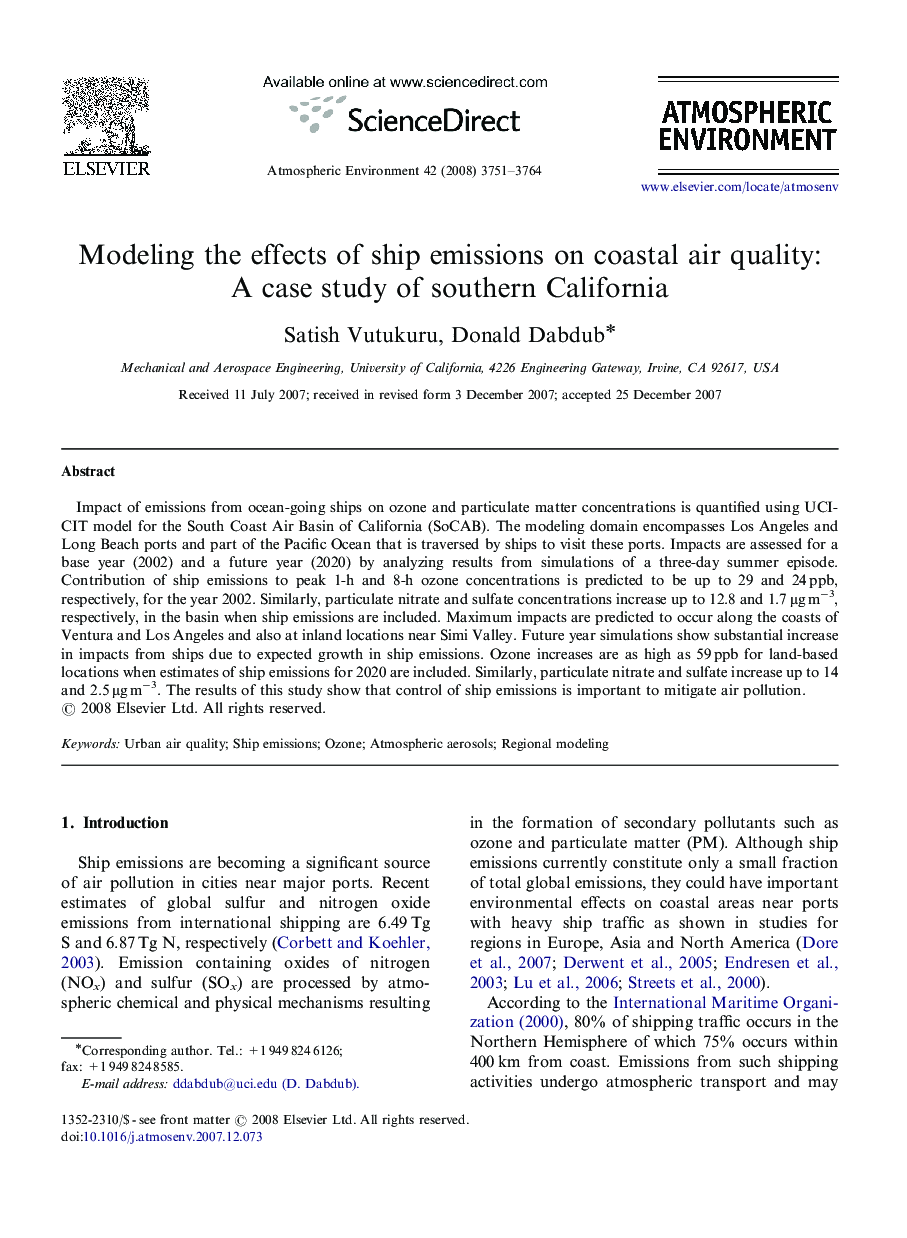| Article ID | Journal | Published Year | Pages | File Type |
|---|---|---|---|---|
| 4441918 | Atmospheric Environment | 2008 | 14 Pages |
Impact of emissions from ocean-going ships on ozone and particulate matter concentrations is quantified using UCI-CIT model for the South Coast Air Basin of California (SoCAB). The modeling domain encompasses Los Angeles and Long Beach ports and part of the Pacific Ocean that is traversed by ships to visit these ports. Impacts are assessed for a base year (2002) and a future year (2020) by analyzing results from simulations of a three-day summer episode. Contribution of ship emissions to peak 1-h and 8-h ozone concentrations is predicted to be up to 29 and 24 ppb, respectively, for the year 2002. Similarly, particulate nitrate and sulfate concentrations increase up to 12.8 and 1.7 μg m−3, respectively, in the basin when ship emissions are included. Maximum impacts are predicted to occur along the coasts of Ventura and Los Angeles and also at inland locations near Simi Valley. Future year simulations show substantial increase in impacts from ships due to expected growth in ship emissions. Ozone increases are as high as 59 ppb for land-based locations when estimates of ship emissions for 2020 are included. Similarly, particulate nitrate and sulfate increase up to 14 and 2.5 μg m−3. The results of this study show that control of ship emissions is important to mitigate air pollution.
